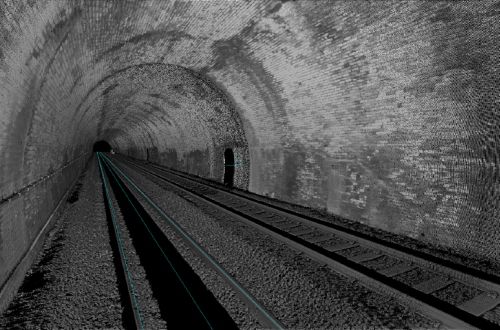NR says with new fleets of trains arriving onto Scotland’s railway, including the class 800/801 inter-city trains for LNER, class 365 and class 385 EMUs, and the growing demands of freight operators, ensuring they fit within the structural gauge on these lines is crucial and time critical.
NR’s team of absolute track geometry (ATG) engineers began using the Trimble GEDOScan system in April to collect detailed information about the track and surrounding features such as bridges, parapets, and platforms and gathered data for use in track clearance assessments on structures and tunnels. The system also increases safety for rail engineers as it reduces the time spent on-track while still gathering much more detailed data.
While the scanning system has been used across the network to carry out general surveys for maintenance and monitoring, it is also assessing the capability and suitability of specific routes to carry certain types of rolling stock. This includes the possibility of introducing class 158 DMUs on the West Highland Line, and ahead of the introduction of High Speed Trains (HSTs) ScotRail services from Glasgow and Edinburgh to Inverness and Aberdeen.
Surveys have also been carried out to assess the network for future freight capacity growth such as at Mossgiel tunnel near Kilmarnock, Drumlanrig, Blochairn and Duke Street tunnels as the railway prepares for larger and longer freight trains on the network.
“Three dimensional scanning provides more detailed information in a shorter time which reduces the need to be on the track; making it safer as well as more efficient,” says NR ATG engineer, Mr Graham Hutchison. “This system is ideally suited to tunnel surveys where irregular construction can make it difficult to locate the main pinch points. The three-dimensional scan measures the full extent of a tunnel precisely in about a fifth of the time than it took previously. It can also be used for proactive monitoring to inform maintenance requirements and to better predict and prevent faults and to reduce disruption for passengers.”

